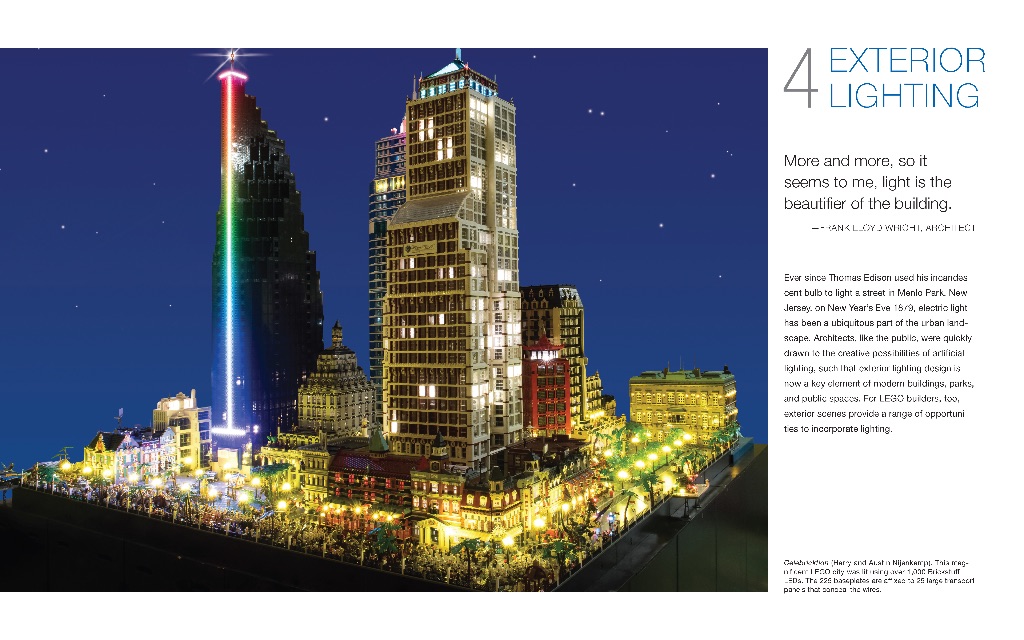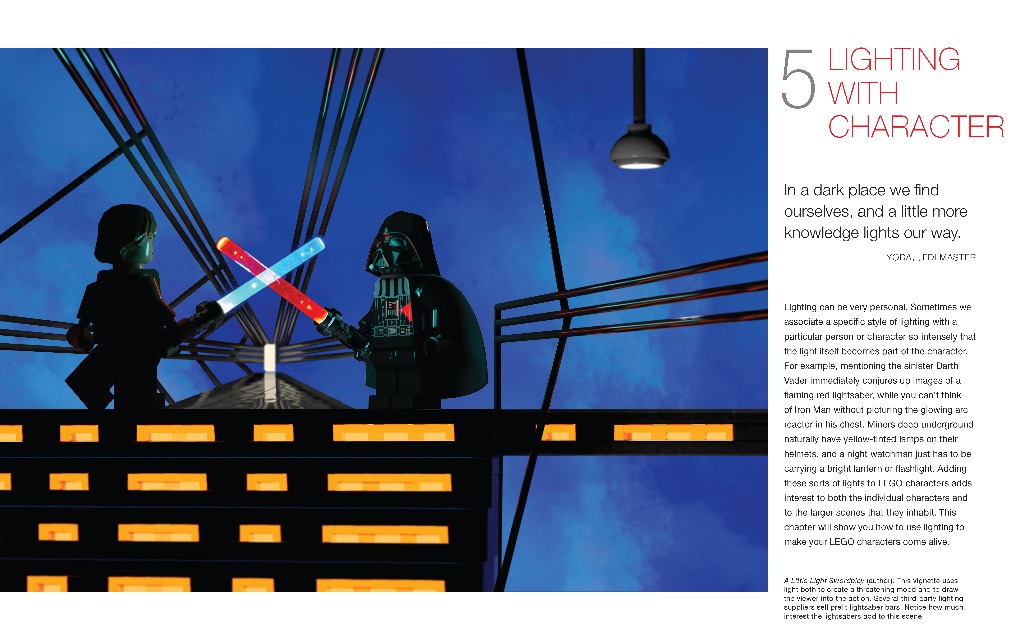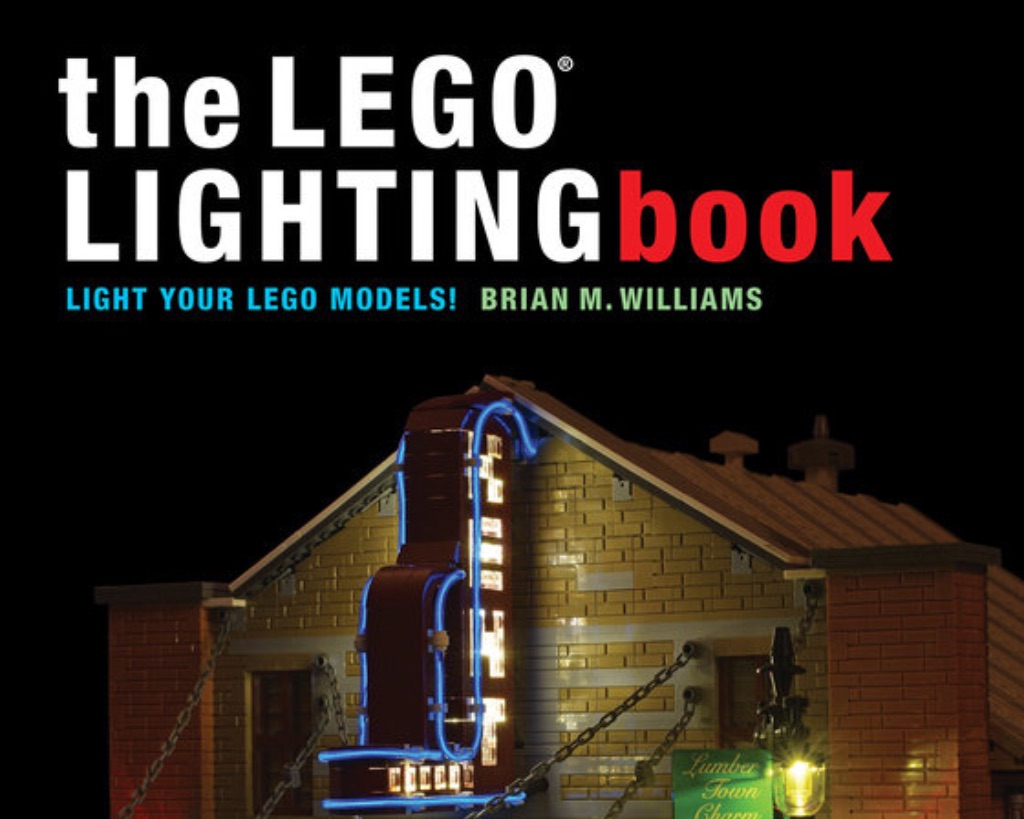LEGO’s definitely have their downsides. There are the hundreds of tiny pieces that will inevitably find their way into the laundry, the vacuum, and even the fridge. There is the threat of physical harm. Have you ever accidentally knelt on a lego that is somehow the perfect size to fit between your knee cap bone and whatever it connects to, causing your soul to briefly leave your body? Because I have and I don’t recommend it. So why would I continue to let these tiny bits of dangerous plastic stay in the house? Well, I’m a sucker for quiet time and nothing keeps my kids entertained like putting together a 500 piece lego creation while I read a book and drink my coffee in peace. It’s also a fun way for them to practice working together and one of my LEGO-loving husbands favorite things to do with them.
So I was very excited when I got the opportunity to review The LEGO Lighting Book by Chicago author and five time Brickworld award winner Brian M. Williams. This book takes LEGO builds to the next level by incorporating lighting options into the structures. Williams uses various methods from DIY circuits to Christmas lights.

What I liked best about this book was how clearly everything was laid out. The chapters were divided into nine sections that start with the basics of building your own LED light to lighting your own LEGO theater using multiple sources. There are step-by-step instructions and pictures to illustrate how lights and LEGO’s could be used in conjunction with each other. After giving you details about the specific focus of the chapter, Williams shares examples of how the techniques are used. These detailed pictures showcase the skills from different projects that were created by Williams himself and other builders. The pictures are well done and Williams gives a little bit of background for each one. The chapter closes with a project that focuses on what you’ve learned. For example, the Vehicle Lighting Chapter teaches you how to build your own mini monster truck. There is an illustrated guide that gives you the names and colors of all the bricks you’ll need for the build. Next, Williams walks you through carefully detailed instructions that are similar to the instructions you get with all LEGO projects, except these also include instructions for how to add the lighting elements.

Overall, I thoroughly enjoyed this book. While it has some advanced elements like creating a wiring diagram, there are also simpler options that could be done with just a couple of small lights. Williams makes complex lighting techniques easy to understand and breaks down complex builds into manageable step-by-step instructions. Whether you want to take your LEGO builds up a notch or give yourself an extra hour of quiet time by letting your husband and kids build a circuit board, this book is an amazing resource that should have a space on every LEGO enthusiast’s shelf.
And if perhaps, as you are reading (or, ahem, writing) this, you realize that it’s Fathers Day this weekend, this could be a really great gift if you know a dad-figure who loves to build with LEGOs.








